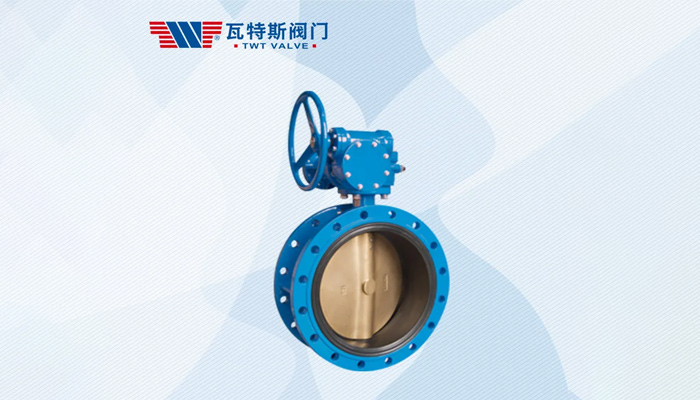
Apr 11, 2024 | News
Step into the realm of engineering marvels with high performance butterfly valves (HPBVs), often hailed as the enigmatic double offset butterfly valves. These masterpieces of fluid dynamics orchestrate the flow within pipes with finesse and precision. Embracing high-performance butterfly valves promises a symphony of operational enhancements, unlocking a spectrum of possibilities to optimize your fluid management endeavors.
Key aspects to enhance operations of High performance butterfly valves
Improved Process Efficiency:
Process efficiency is crucial for optimal flow capacity, minimized emissions, and reduced energy consumption. High-performance butterfly valves achieve this through several innovative features:
- Optimized Geometry: These valves are designed with field-proven technology and decades of experience. The geometry ensures smooth and efficient flow, minimizing turbulence and pressure drop.
- Reduced Energy Consumption: By minimizing flow resistance, these valves require less energy to overcome resistance. Additionally, their tight shut-off design allows the use of smaller actuators, further reducing energy consumption.
- Metal Seat Technology: Unique metal seat technology minimizes leakage, improving overall system efficiency and sustainability.
Enhanced Flow Capacity:
The heart of a butterfly valve is its disc. Even when fully open, the disc remains in the middle, affecting flow capacity. High-performance butterfly valves address this:
Two-Shaft Design: In addition to the traditional one-shaft design, high-flow capacity versions with a two-shaft design optimize flow by providing more free space in the valve flow port.
Durability and Longevity:
High-performance butterfly valves are built to withstand demanding conditions. Their robust materials and design ensure longevity, reducing maintenance costs.
Energy Efficiency:
- Reduced energy consumption due to optimized geometry and smaller actuators contributes to cost savings.
- Compressed air systems, often energy-intensive, benefit from these efficient valves.
Safety and Environmental Compliance:
- Minimized internal and external leakages enhance safety and environmental performance.
- These valves are sustainable choices, reducing the risk of failure in demanding service.
- Improved Flow Characteristics
- Reduced Wear and Tear
- Tight Shut-Off
- High-Performance Operation
- Wide Temperature and Pressure Range
- Bi-Directional Flow Capability
The eccentric design of these valves provides better flow characteristics compared to other types. The offset disc allows for a more streamlined flow of fluid, reducing turbulence and pressure drop. This results in improved flow rates and better control over fluid flow.The offset disc design minimizes wear and tear on valve components. When the valve is closed, the disc contacts only one side of the valve body, reducing friction. This extends the valve’s lifespan and reduces maintenance needs.
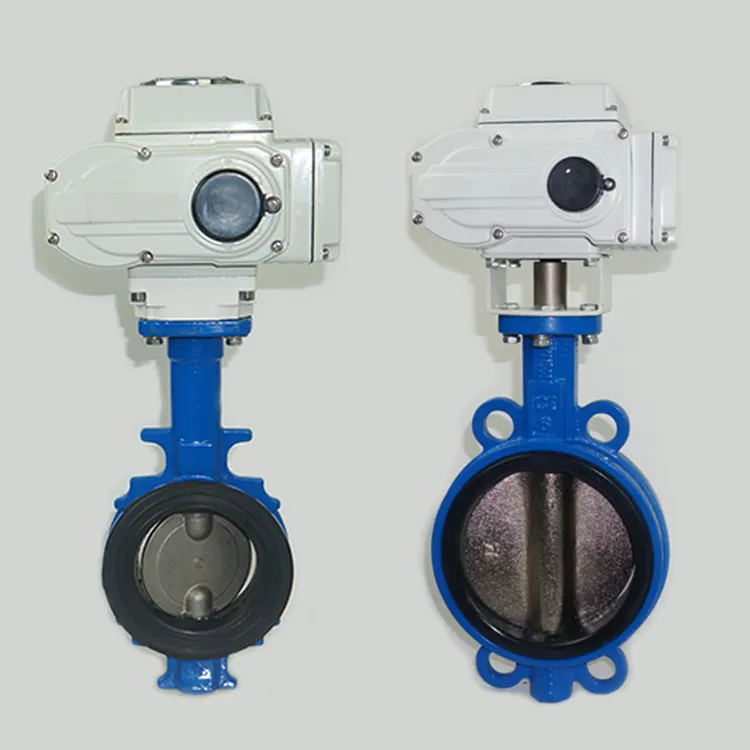
To encapsulate, the utilization of high-performance eccentric butterfly valves unveils a realm of precision, energy conservation, and heightened system efficacy. Harness the potential of these electrically-driven marvels to not only refine control but also to economize energy and bolster operational efficiency. Besides, integrate electric butterfly valve into your operations to elevate performance standards while concurrently curbing costs.
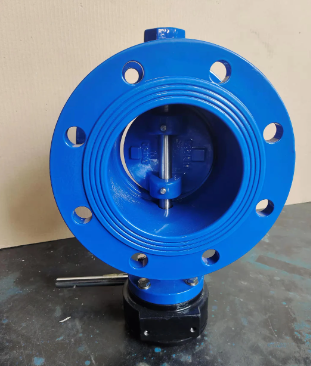
Apr 10, 2024 | News
Butterfly valves are essential for controlling fluid flow in various industries. Common types include the DI (Ductile Iron) Butterfly Valve and CI (Cast Iron) Butterfly Valve. It’s essential for those engaged in fluid management systems to grasp their features and applications. In this article, we explore the characteristics and uses of both DI and CI butterfly valves, highlighting their significance in modern industry.
Ductile Iron (DI) Butterfly Valve
Material:
Made from ductile iron, which provides enhanced strength and durability.
Design:
Typically has a concentric disc design, with the stem aligned at the centerline of the valve body.
Applications:
- Water Supply and Distribution: Ductile iron (DI) butterfly valves find extensive application in water treatment facilities, distribution networks, and reservoirs. They serve to regulate the flow of water, segment areas for maintenance purposes, and manage pressure levels.
- Wastewater Treatment Valves: These valves play a crucial role in managing sewage and wastewater flow within treatment facilities. They guide effluent movement throughout the treatment process.
- HVAC Systems: Ductile iron (DI) butterfly valves are essential components in heating, ventilation, and air conditioning (HVAC) systems. They allow precise control of fluid flow within pipes, ducts, and chillers, enhancing overall system efficiency.
- Power Generation: Ductile iron (DI) butterfly valves are widely used in power plants. They play a key role in managing cooling water circuits, fuel handling, and steam systems, ensuring operational efficiency and safety.
- Chemical Processing Valves: In chemical plants, these valves regulate the flow of corrosive or aggressive chemicals. Constructed from ductile iron, they possess the resilience to withstand chemical exposure, guaranteeing durability and longevity.
- Food and Beverage Industry Valves: Ductile iron (DI) butterfly valves are ideal for handling food-grade liquids, maintaining strict hygiene standards, and preventing contamination in the food and beverage sector.
- Pharmaceutical Manufacturing: Utilized in pharmaceutical processes, DI butterfly valves provide precise control over fluids. Their durability and corrosion resistance render them valuable assets in pharmaceutical manufacturing settings.
- Ship building: DI butterfly valves serve various marine applications, including ballast systems, bilge pumps, and seawater lines.
Advantages:
- Robust construction for high-pressure applications.
- Good resistance to corrosion.
- Can handle elevated temperatures.
- Limitations:
- May be more expensive than other types.
- Not always ideal for throttling services.
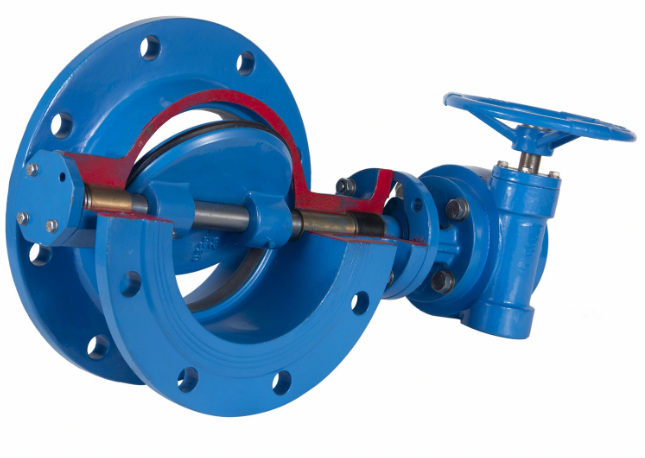
Cast Iron (CI) Butterfly Valve
Material:
Made from cast iron.
Design:
Similar to DI butterfly valves, but with cast iron material.
Applications:
- Water Supply and Distribution: CI butterfly valves regulate water flow in municipal water supply networks, reservoirs, and distribution systems. They are cost-effective and easy to install.
- Wastewater Treatment: Used in sewage treatment plants and wastewater pipelines. CI butterfly valves control the movement of effluents and prevent backflow.
- Fire Protection Systems: CI butterfly valves are essential components in fire hydrants and sprinkler systems. They quickly shut off water flow during emergencies.
- HVAC Systems: CI butterfly valves manage heating, ventilation, and air conditioning systems. They regulate fluid flow in pipes and ducts.
- Industrial Processes: CI butterfly valves serve in chemical processing, manufacturing, and metal-mineral industries. They handle non-corrosive fluids and gases.
- Shipbuilding: Used in marine applications for ballast systems, bilge pumps, and seawater lines.
Advantages:
- Economical.
- Suitable for low-pressure applications.
- Good flow control capabilities.
Limitations:
- Prone to rust and requires regular maintenance.
- Not as robust as ductile iron valves.
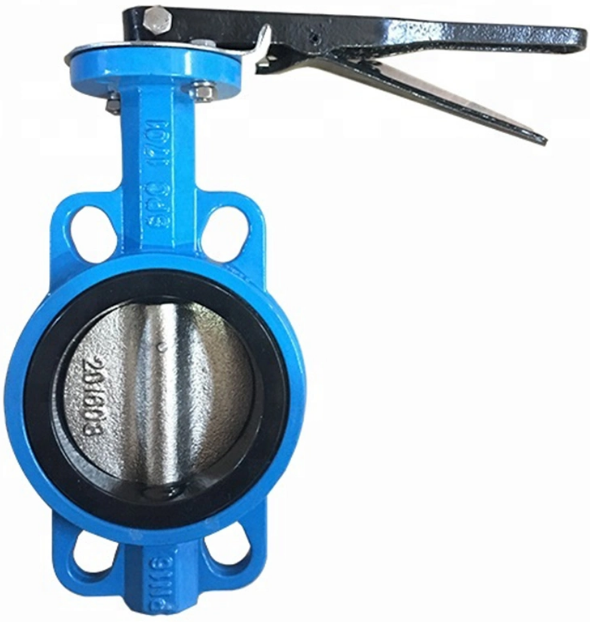
In summary, DI butterfly valves are robust and suitable for various services, while CI butterfly valves are economical but better suited for low-pressure applications. Ductile Iron wafer butterfly valves offer cost-effectiveness and ease of installation but lack end-of-line service capability. Remember to choose based on your specific project requirements!
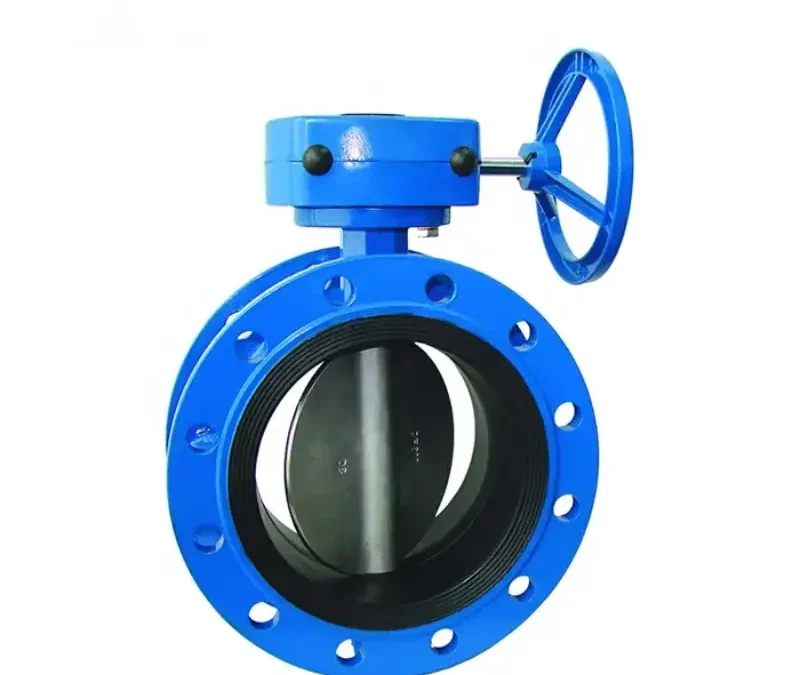
Apr 9, 2024 | News
In the dynamic world of industrial valves, butterfly valves emerge as the versatile maestros of fluid control. Amidst this symphony of options, three star performers take the stage: the Double Flange Butterfly Valve, the HP Butterfly Valve, and the Lug Type Butterfly Valve. Each valve dances to its own rhythm, offering a bespoke blend of features and advantages crafted to meet distinct needs. Let’s embark on a journey to unravel their unique melodies.
Double Flange Butterfly Valve
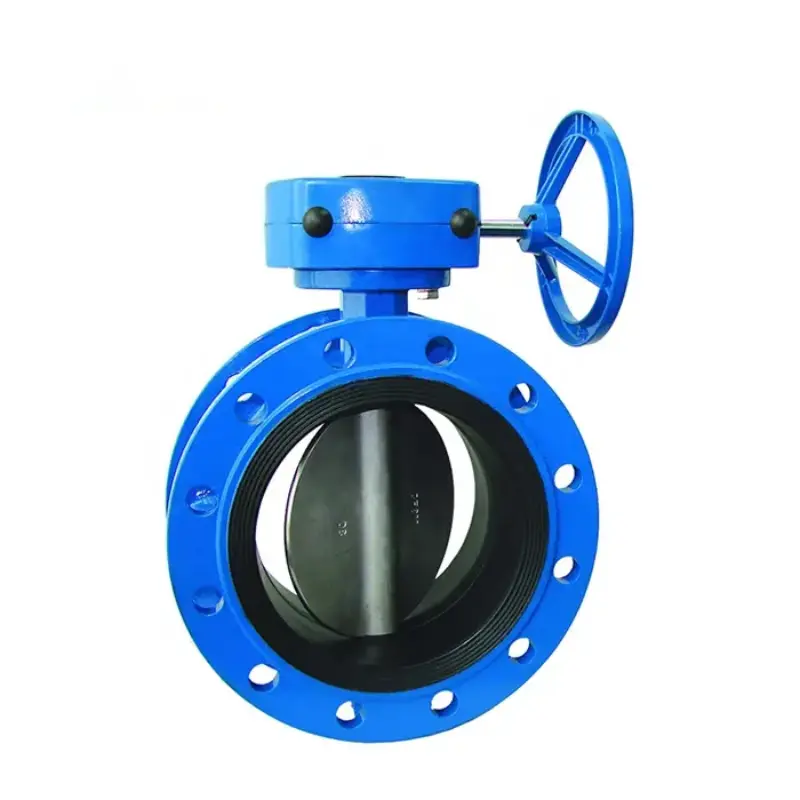
Imagine a valve with flanges on both ends – that’s the Double Flange Butterfly Valve. These flanges make it a breeze to install between existing flanges in pipeline systems. Not only does this design boost stability, but it also ensures a snug fit, preventing any pesky leaks or unexpected movements during operation.
Key Points:
- Simple installation thanks to flanges on both ends.
- Uses resilient seating materials like EPDM, NBR, or Viton for effective sealing.
- Often seen in applications that demand tight shut-off and minimal pressure drop.
Common Applications:
- Water treatment facilities
- HVAC systems
- Municipal water networks
High-Performance (HP) Butterfly Valve
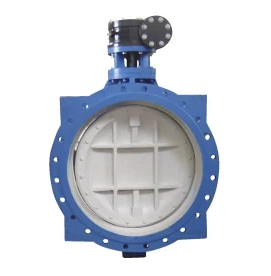
If you’re dealing with high pressures and temperatures, the HP Butterfly Valve is your go-to. Designed to handle tough industrial environments, this valve boasts a sturdy build and superior sealing capabilities, making it a reliable choice where performance is non-negotiable.
Key Points:
- Built tough to withstand high pressure and temperature conditions.
- Metal-seated design for extra durability and resistance to wear and tear.
- Can seal in both directions, providing flexibility in flow control.
Common Applications:
- Petrochemical plants
- Oil and gas pipelines
- Power generation plants
Lug Type Butterfly Valve
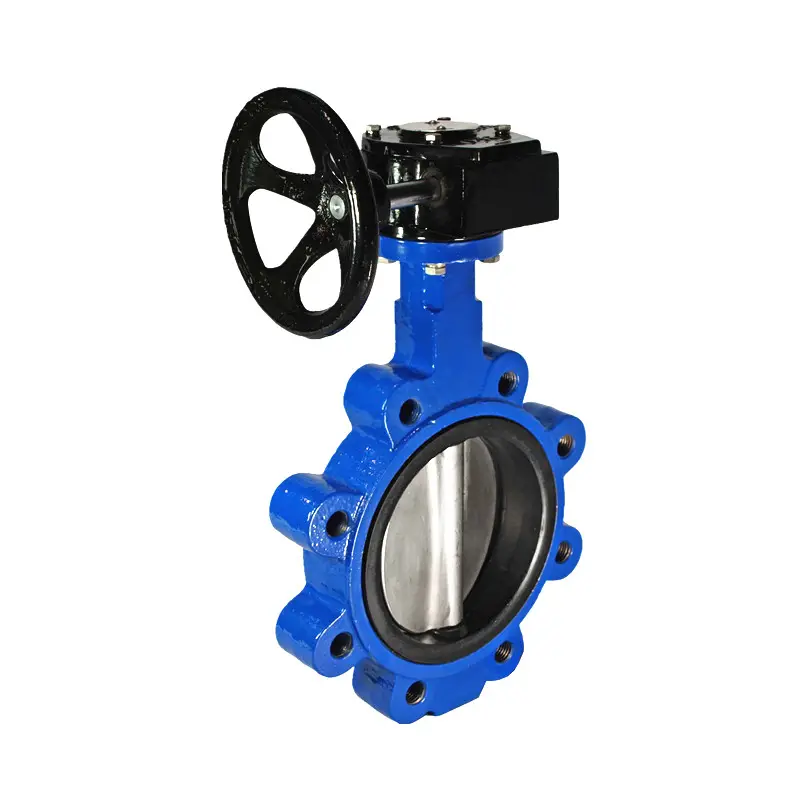
Ever needed to remove a valve without disrupting the entire pipeline? Enter the Lug Type Butterfly Valve. With its distinctive lugs or ears sticking out from the valve body, this type offers hassle-free installation and removal, perfect for situations requiring frequent maintenance or replacement.
Key Points:
- Lugs make for easy installation and removal without disturbing the pipeline.
- Available in both wafer and lug configurations for versatile installation options.
- Suitable for applications that need bi-directional flow control.
Common Applications:
- Chemical processing facilities
- Pulp and paper mills
- Water distribution systems
Comparing the Three
- Though all three types of butterfly valves share the same goal of controlling fluid flow, they differ in design, construction, and ideal applications.
- Installation: the Double Flange Butterfly Valve gracefully nestles between flanges, ensuring a snug fit that spells stability and security. Meanwhile, the Lug Type Valve takes a different approach, utilizing its lugs to effortlessly hook into place, offering a seamless removal process that keeps the pipeline undisturbed. It’s a choreographed dance of precision and convenience, each step orchestrated to perfection.
- Pressure and Temperature Handling:the HP Butterfly Valve emerges as the undisputed champion, capable of braving the fiercest conditions with unwavering poise. Its robust construction and advanced design equip it to tackle extreme pressures and temperatures, rendering it the hero of the most challenging industrial battlegrounds. It’s a testament to resilience, a beacon of strength amidst the heat of adversity.
- Sealing Mechanism: While all three types use resilient materials for sealing, the HP Butterfly Valve often incorporates metal seats for added durability in harsh conditions.
- Application Specifics: Each valve type is tailored to specific needs based on factors like pressure, temperature, and maintenance requirements. For instance, the Double Flange Valve is commonly found in water distribution, while the HP Valve thrives in industries with tough operating conditions.
At its core, selecting the perfect butterfly valve becomes a journey of discovering the harmony between your unique requirements and the valve’s capabilities. Whether you seek the seamless embrace of effortless installation, the stalwart resilience against the tempest of extreme conditions, or the comforting embrace of simplified maintenance, rest assured, there exists a butterfly valve tailored precisely to your needs. It’s a symphony of compatibility, where every note resonates with the melody of your specific circumstances, ensuring a harmonious flow in every aspect of your operation.
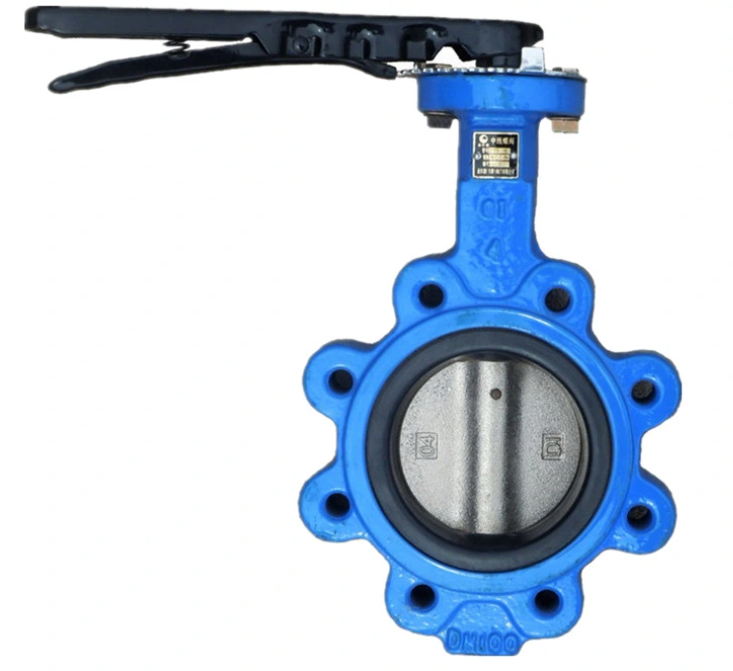
Apr 7, 2024 | News
Both pneumatic actuator butterfly valves and electric pneumatic butterfly valves present distinct benefits concerning control, velocity, and cost-effectiveness. Pneumatic variants, renowned for their automated actuation, are extensively employed across diverse industries. Conversely, electric actuators afford meticulous control tailored to particular applications.

Pneumatic butterfly valves are essential components in various industrial applications where precise fluid flow control is crucial. Here’s what you need to know:
Working Principle:
A pneumatic butterfly valve comprises a central disc nestled between a stem and a pipe. The stem links to a pneumatic actuator powered by compressed air, propelling either a diaphragm or piston. By rotating the stem 90 degrees, the actuator positions the disc parallel to the fluid flow, facilitating seamless passage through the valve. Rotating the stem partially enables proportional or throttled flow, making these valves suitable for modulating services.
Types and Applications:
- Concentric Type: These valves have a concentric disc closure design.
- Eccentric Type: Eccentric butterfly valves are also common.
- Connection Varieties: Valves are available in wafer-style, lug-style, or flanged designs.
- Utilizations: Pneumatic butterfly valves are applied across a spectrum of industries, encompassing chemical processing, water treatment, and HVAC systems.
Pros:
- Fast Response: Pneumatic actuators can quickly open or close the valve, making them suitable for applications requiring rapid adjustments.
- Cost-Effective: Pneumatic systems are generally more affordable than electric ones.
- Simple Design: These valves have fewer components, making maintenance and installation straightforward.
- High Pressure Handling: Pneumatic actuators can handle high-pressure environments effectively.
Cons:
- Air Supply Dependency: Pneumatic valves rely on a continuous supply of compressed air. Any interruption can affect their operation.
- Restricted Accuracy: Attaining meticulous control or exact positioning can pose difficulties owing to the discrete manner of pneumatic actuation.
- Audible Disturbance and Vibrations: Operational noise and vibrations may arise from pneumatic systems.
- Increased Dimensions: Pneumatic actuators typically exhibit larger physical profiles in contrast to their electric counterparts.

Electric butterfly valves combine the benefits of both electric and pneumatic actuators. Here’s a brief comparison:
Electric Actuators:
Utilize electrical power for precise control and automation.
Ideal for applications requiring accuracy.
Slower response time compared to pneumatic actuators.
Pneumatic Actuators:
Use compressed air or gas for actuation.
Faster response time.
Commonly used for larger valves due to cost-effectiveness.
Pros:
- Accurate Management: Electric actuators enable precise adjustment and meticulous control over valve opening and closing.
- Streamlined Processes: Electric valves seamlessly integrate into automated setups, minimizing the requirement for manual intervention.
- Independence from Air Supply: Electric actuators operate autonomously without dependence on external air sources, circumventing concerns related to air supply.
- Quiet Operation: Electric systems operate quietly without the noise associated with compressed air.
Cons:
- Slower Response: Electric actuators are generally slower to respond compared to pneumatic ones.
- Higher Cost: Electric systems tend to be more expensive upfront.
- Complexity: Electric actuators have more components, which can increase maintenance complexity.
- Limited Pressure Handling: Electric actuators may not handle extremely high pressures as effectively as pneumatic ones.
In summary, choose based on your specific application requirements. Pneumatic actuators excel in speed and cost-effectiveness, while electric actuators offer precision and automation capabilities. TWT Valve is a professional manufacturer from China can produce pneumatic actuator butterfly valve, electric pneumatic butterfly valves, and ductile iron wafer butterfly valve.
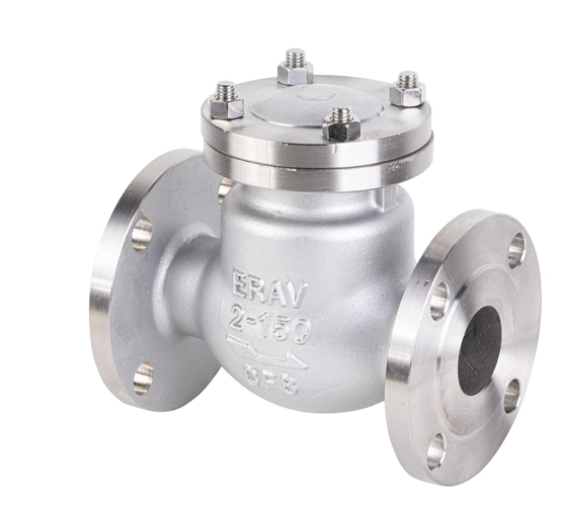
Apr 7, 2024 | News
Check valves are essential components that serve to prevent reverse flow within a system. Their primary function is to facilitate fluid movement in a singular direction, automatically shutting off when there’s an attempt of fluid movement in the opposite direction. This article will explore three distinct types of check valves, each offering its own set of features and benefits.
Axial Flow Check Valve
Axial Flow Check Valves are pivotal for the protection of pumps and compressors. They induce flow in one direction and prevent backflow in the other. This results in reduced extensive damage to equipment, increasing system durability. The benefits include rapid closing, tailored sizing, a compact design, and substantial flow coefficient, making them the ideal valve for oil collection and transmission. Apart from their responsiveness to change in flow, they also have a low maintenance cost, making Axial Flow Check Valves a suitable addition to various industries.
Dual Disc Check Valve
Dual Disc Check Valves, alternatively referred to as Double Door Check Valves, exhibit versatility and extensive application across various sectors including water treatment plants, oil and gas refineries, chemical processing plants, and power generation facilities. Renowned for their efficacy in fluid and gas regulation within these industries, their design minimizes downtime, bolsters safety measures, and enhances overall reliability. Particularly suitable for scenarios demanding minimal pressure drop and the prevention of potential leakage issues, this non-slam valve stands out for its performance.
Stainless Steel Check Valve
The rising popularity of Stainless Steel Check Valves stems from their remarkable combination of strength, durability, corrosion resistance, and precision. Their widespread adoption in demanding environments like food processing, pharmaceutical manufacturing, and petrochemical industries underscores their robustness. Stainless steel’s innate corrosion resistance ensures these valves withstand water and harsh chemicals exceptionally well, enhancing their versatility and widespread use.

Axial Flow Check Valves, Dual Disc Check Valves, and Stainless Steel Check Valves offer distinct advantages and are suited for specific applications. Appreciating the nuanced disparities between these valve types can significantly aid in their appropriate selection, especially when seeking optimal functionality to meet various system demands.
In this article, we explore the distinctive applications and benefits of various check valves, particularly axial flow check valves, dual disc check valves, and stainless steel check valves. Understanding these differences can help inform better decisions when selecting a check valve for various uses.













